How To Conduct Churn Surveys For Free: Practical Tips
Many SaaS businesses use surveys to get information on specific, relevant issues. These questions can be different, covering a wide range of topics. You can choose to make your survey in a variety of ways. To obtain the most accurate data you should write and present your questions in the best way possible. Individual viewpoints and experiences can be made more representative through surveys. Through surveys, viewpoints and experiences of individuals are easier to see. When businesses make the survey correctly, it can provide accurate information about people’s beliefs and behaviors. It’s crucial while making critical decisions. In this article, I’ll go through churn surveys.
Pro Tip:
P.S: Create your churn survey with our completely free survey & NPS tool now!
What is a churn survey?
Churn surveys gather feedback from customers and users who are canceling or downgrading their service with your firm. It gives an excellent opportunity to identify more areas that might easily aid one in developing more in order to avoid future “churn.” It helps you to understand why consumers leave accurately. It can also help you identify places in the sales funnel where potential customers drop off and where your sales staff could focus their efforts for better outcomes. Retention and cancellation surveys are different ways to refer to churn surveys.
What are churn survey questions?
The sort of questions you ask on your surveys may have a significant impact on the insights you receive. It can maximize your capacity to improve the experience.
Likert Scale inquiry allows consumers to respond from one extreme to the other, with or without a neutral response.
Example: How satisfied are you with our service?
1. Very satisfied.
2. Moderately satisfied.
3. Neither satisfied nor dissatisfied.
4. Moderately dissatisfied.
5. Very dissatisfied.
Binary questions are the quickest way to get an answer to any feedback survey question. You may obtain a general feel of whether consumers’ demands have been addressed by asking a simple yes/no question.
Example: Were you satisfied with your experience with us?
Yes / No
Multiple-choice questions can help you learn more about your consumers and their experiences. This sort of inquiry allows your consumer to describe in their own words how happy they are with your products or services and what they would recommend if they are not satisfied.
Example: Which of our services/goods was most useful for you today?
Service X
Good Y
Service Z
I will be listing three different questions to ask your customers for the churn survey.
- What led you to cancel your plan?
By giving the client multiple responses as options, you can also make it easy for them to make the appropriate choices and reply as quickly as possible. You could be curious about the major cause and whether or not they choose another service. It might possibly be a combination of various things that caused them to cancel.
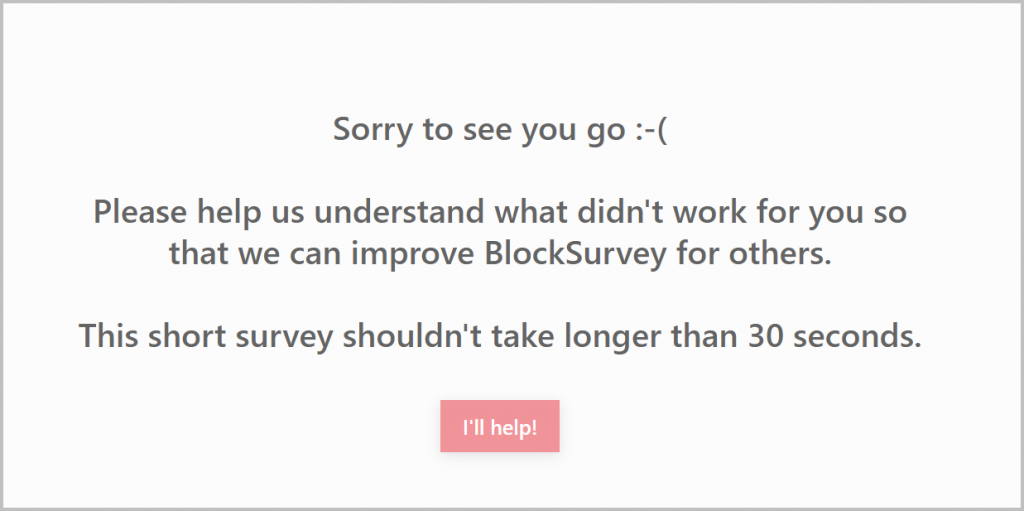
- Is there anything we could do that would change your decision?
Customers have been telling you their views up to this point, and while they may not answer the question, you may get a deeper look and discover a method to persuade them to stay or return. They could get a better understanding of you and give you another chance. If not, it’s time to make a choice and start improving your product, service, or business structure.
- How can we improve the product?
Reconnecting with your customers will give them the sense that you care about them. They may recommend or return to you in the future. Now that you’ve identified the problem, it’s time to take action. Pay attentive attention to your client’s demands and provide adequate value.
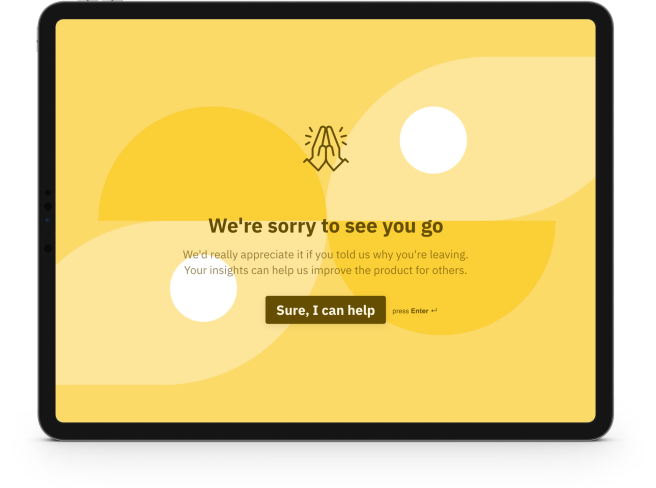
Other survey types for SaaS business
Surveys are a crucial tool that any business should use to help it grow and flourish. Surveys are a straightforward method for gathering relevant feedback and information from both anonymous and recognized consumers. You can use the data to improve procedures, operations, product, and marketing efforts, as well as the customer and staff experience. Furthermore, surveys show your consumers that you value their opinion and aim to use it to better your company and its offerings. Surveys, on the other hand, are not one-size-fits-all. In other words, different types of surveys serve vastly different goals.
A market research survey may assist you to acquire information about your market, such as how and where your products are purchased, consumer preferences, your degree of competitive positioning within an industry, and customer demographics. It is usually carried out when there is no information about an audience or a product. You may collect contact information as well as preferences from your target audience with a lead-generating survey. It enables you to compile a list of prospects who could be interested in your product or service. NPS surveys are used to determine customer loyalty and the likelihood of them recommending you to their friends and family.
A pricing survey is a questionnaire designed to help a firm determine how much to charge for a product or service. A customer satisfaction survey is used to determine how satisfied consumers are with a certain product, service, or corporate activity. These surveys provide helpful information that your firm may use to increase client retention and loyalty. CSAT surveys are used to help companies assess how satisfied their customers are with the company, its products, or its services.
NPS
The net promoter score (NPS) is frequently regarded as the gold standard customer experience statistic. It was created in 2003 by Bain and Company. Millions of organizations now utilize it to monitor and track how their consumers view them. It gauges consumer impression by asking a simple question: “How likely are you to suggest our product to a friend or colleague?”
Customers are classified into one of three groups based on their responses, which range from 0 to 10.
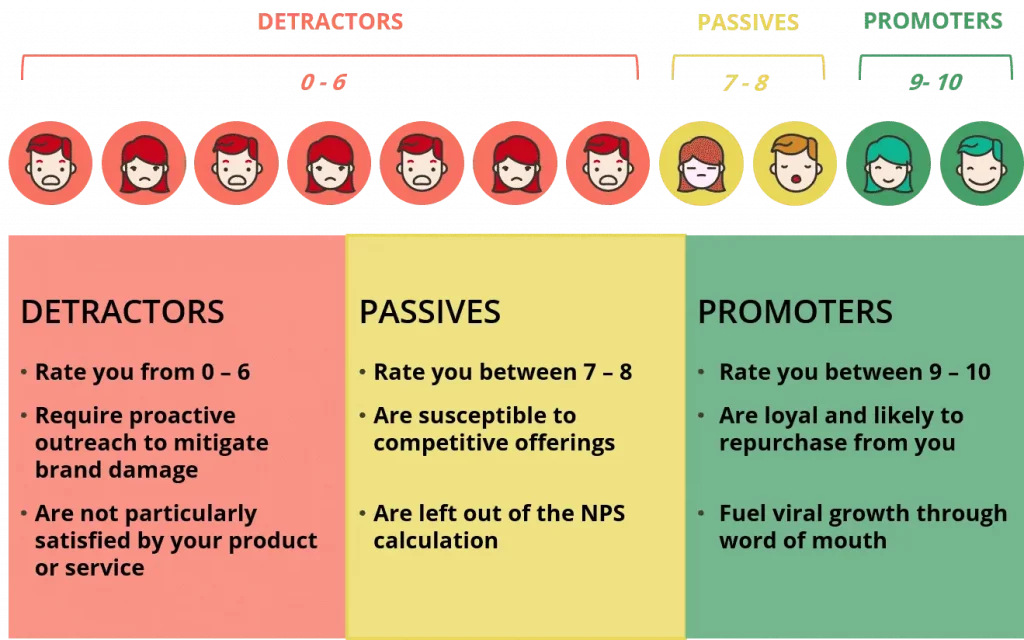
It will help you better understand your target market and how they react to your product or service, social media advertising, and customer support representatives. Instead of becoming consumers, the idea is to develop committed customers who will become brand ambassadors.
See here to learn how you can calculate NPS and many other tools!
Pricing
Companies seeking pricing suggestions for their own products may commonly resort to online pricing surveys to obtain the data required to establish price elasticity. It helps businesses choose how much to charge for a product or service. Pricing surveys can disclose information such as how much people are willing to pay for a product, which features of a product are most valued, and if people in different market segments are willing to pay different amounts for a product.
A pricing survey is beneficial because it provides an empirical method for determining how much consumers are willing to pay for a product. Pricing surveys enable a company to set pricing with confidence, knowing that they have reliable information on how much consumers are willing to pay, rather than relying on a rule of thumb, replicating what competitors charge, or one of many other non-empirical price-setting methods.
There are various ways to figure out how much people are willing to pay for anything. Some approaches are straightforward: simply ask your consumer group how much they would pay for a product. Other ways are circumstantial. Each method can fit better in different situations and settings.
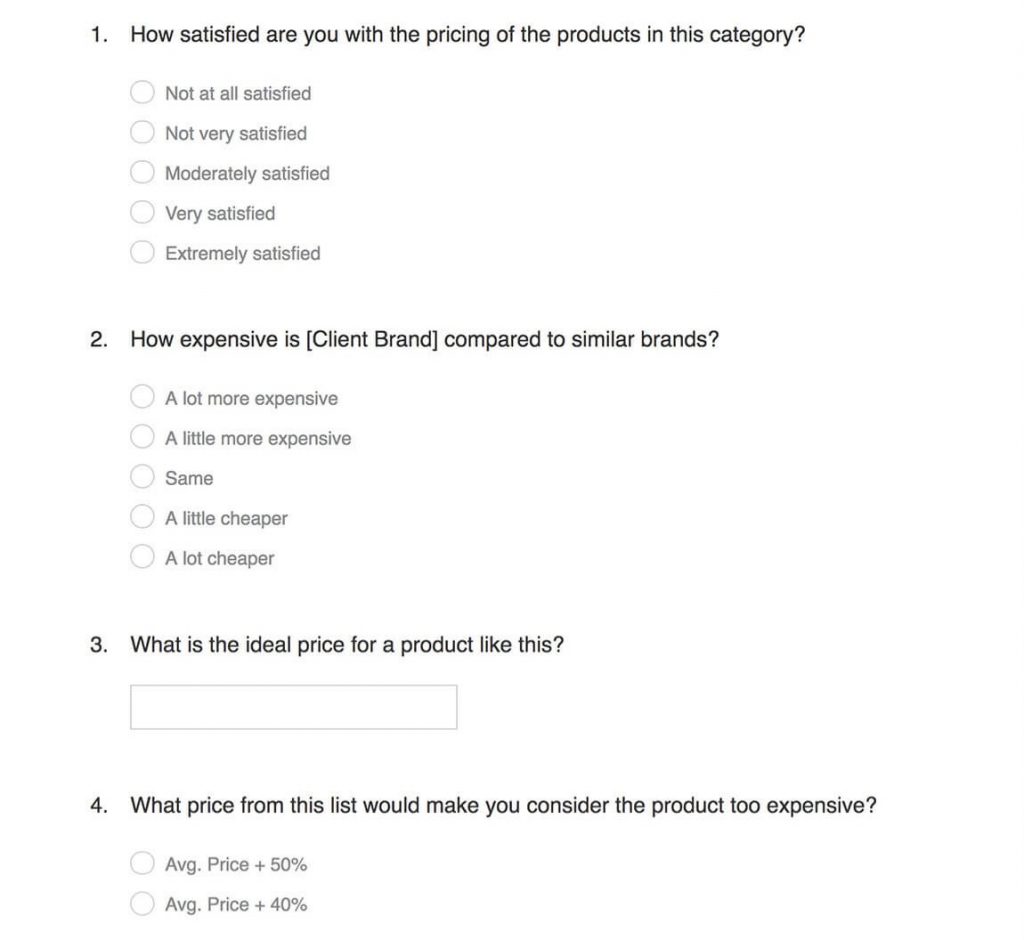
Post-purchase customer satisfaction survey
Post-purchase surveys are questions that you ask a customer immediately after completing a transaction. Depending on your goals, these surveys might range from a single question to a series of questions. The goal of these surveys is to learn more about your customers so that you may improve your product, website, and marketing. The post-purchase survey is sometimes more concerned with the customer’s degree of satisfaction.
Experience is the most essential component in 73% of all customers’ purchase choices, trailing just price and product quality. You may learn a lot about what enticed people to buy from you (for example, price or free shipping) if it was simple to complete the transaction, and how fast the delivery was. Simply ask your consumers why they purchased what they bought or what additional goods they could consider purchasing in the future. You may add questions in your surveys on the customer’s pleasure with you, your product, and the whole experience.
Depending on the type of products or services you provide, you can choose to accomplish the survey immediately after purchase or after a period of time so that the consumer may use the product. With the answers obtained from this survey, you will be able to explicitly say how you can enhance your sales process, how your team is functioning, and what your consumers think about your entire brand.

CSAT
Customer satisfaction (CSAT) surveys are used to assess your customers’ satisfaction with your company’s goods, services, or experiences. With this survey, you can analyze consumer needs, discover problems with your products and/or services, or segment people depending on their score. It helps you to track changes over time and gain a better understanding of whether or not you’re meeting the expectations of your customers.
A customer satisfaction survey is a great way to understand how your customers feel about your company and their customer experience, as well as what new customers might value about your product. Popular survey questions used to collect this feedback are “How would you evaluate your overall contentment with the goods/service you received?” or “How satisfied were you with your experience today?”
You can visit here to learn more about CSAT and many other metrics!
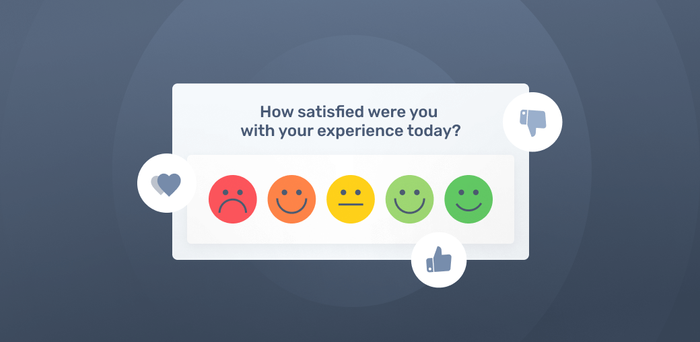
Conclusion
Creating surveys to collect feedback is an excellent approach for minimizing churn. However, in order for your churn surveys to be effective, you must ensure that you ask relevant clients the right questions and gather as much information as possible.
Making it a practice to request client feedback on a frequent basis allows you to spot problems in your product and keep prepared to anticipate and respond to customer wants. Once those issues are identified and fixed, you will be able to retain customers more successfully. As a result, you won’t have to attract new consumers only to replace those that have churned.
The percentage of accounts that cancel or refuse to renew their subscriptions is referred to as churn. Churn is simply the number of customers that stop using a product. This may be calculated using actual use or failure to renew. Churn is generally conducted over a specified period of time, such as monthly, quarterly, or annually.
To detect churn, you must first understand the specific customer behaviors and qualities that indicate the risk and timing of customer churn. Static data and metrics like NPS and CSAT might show signs of turnover.
Churn surveys allow you to collect customer feedback and gain insight into why people leave. With this knowledge, you can now take steps to improve your customer experience and product, thus lowering your churn rate.



